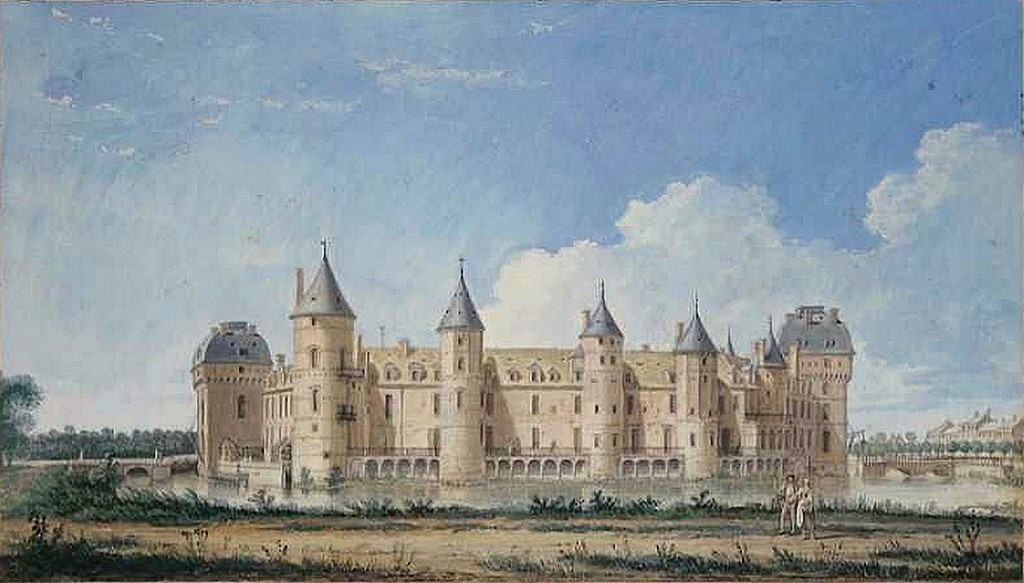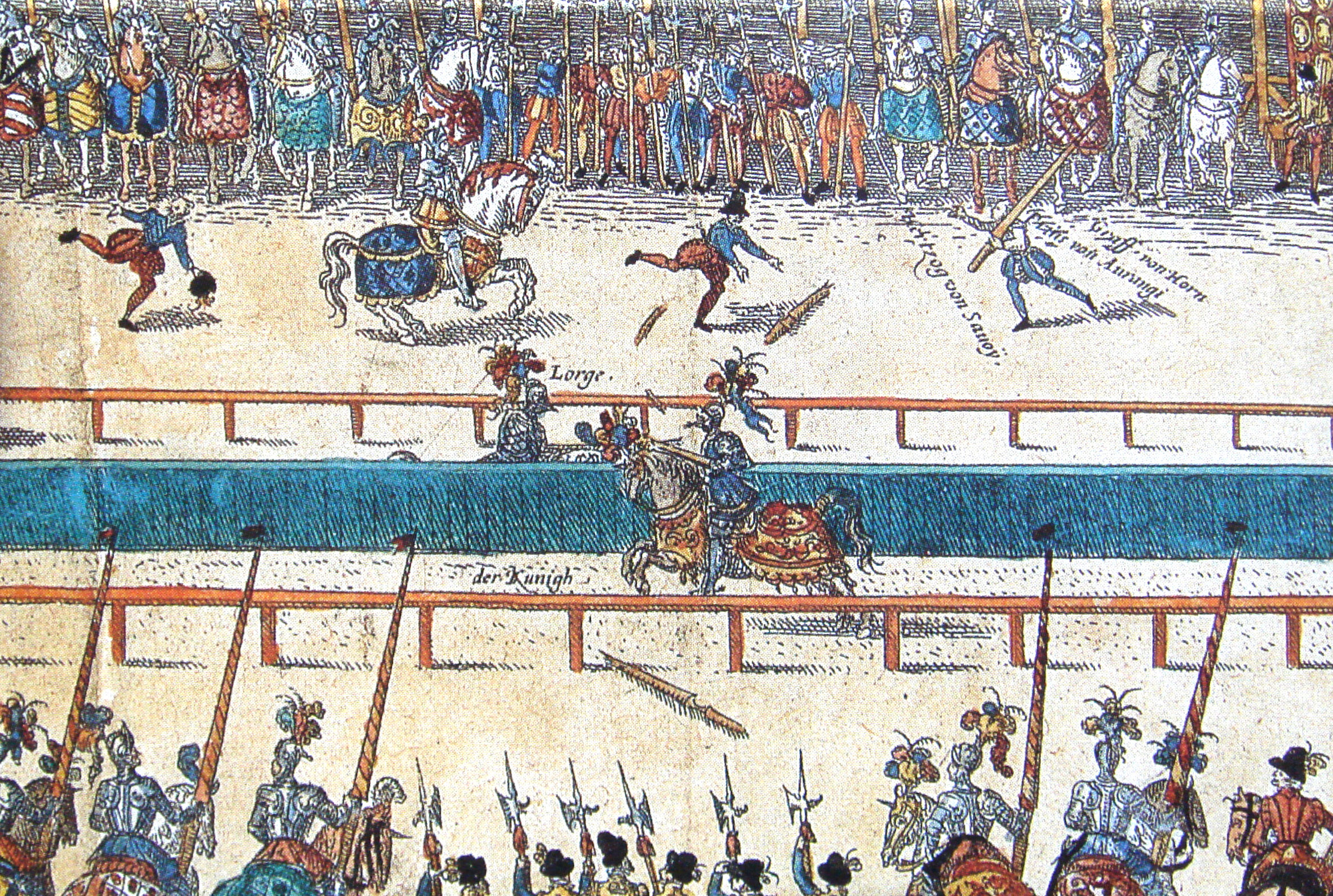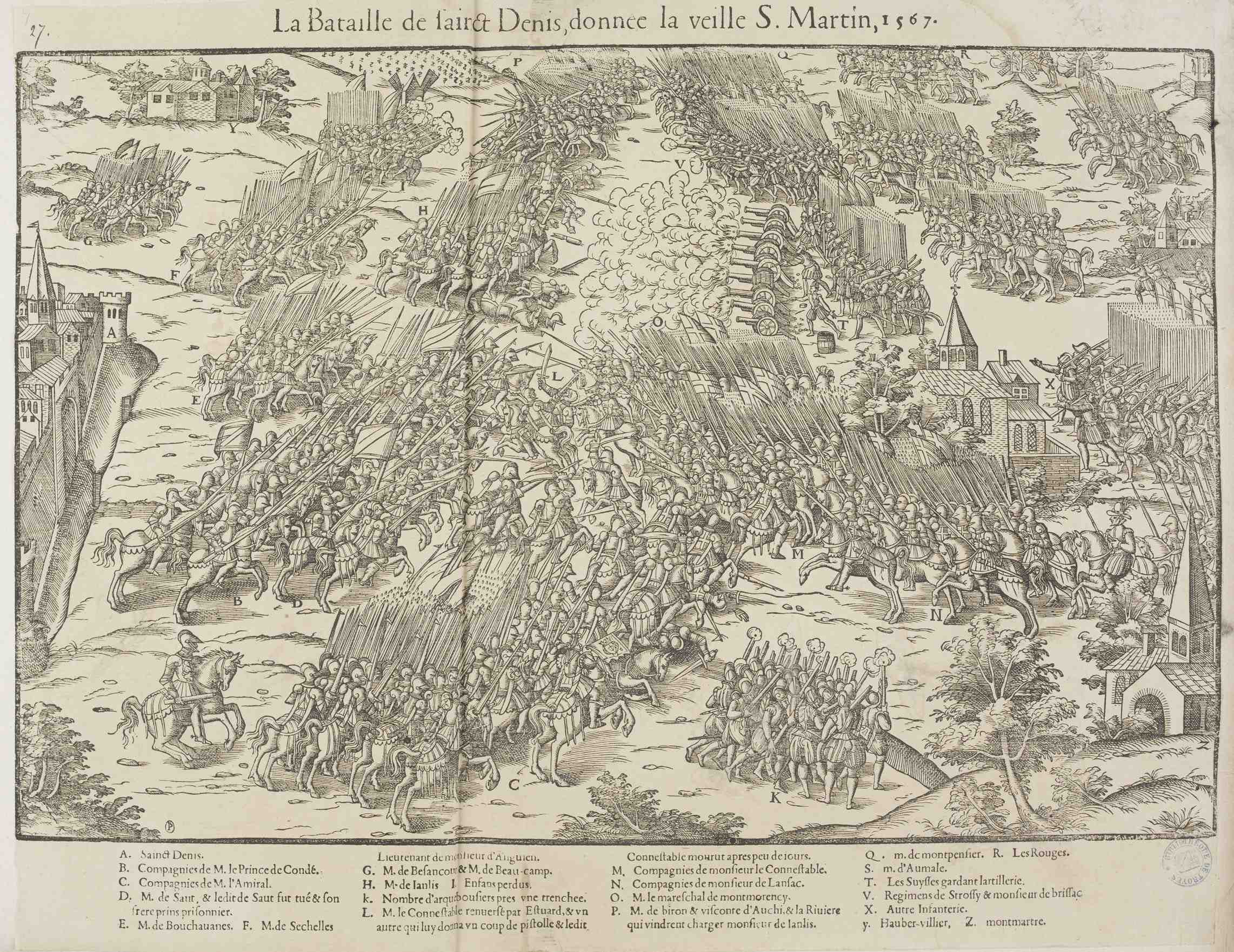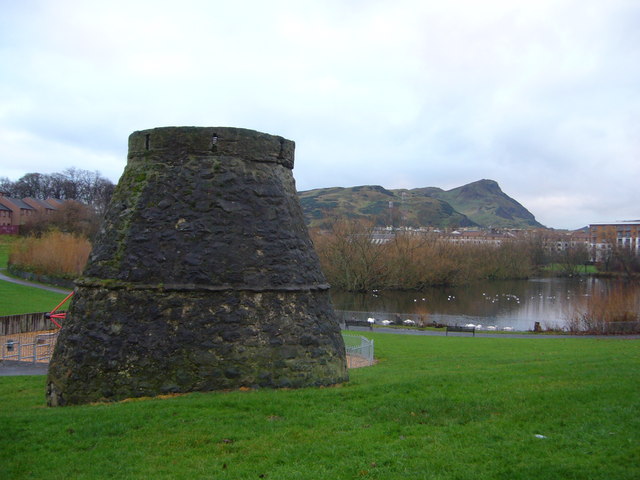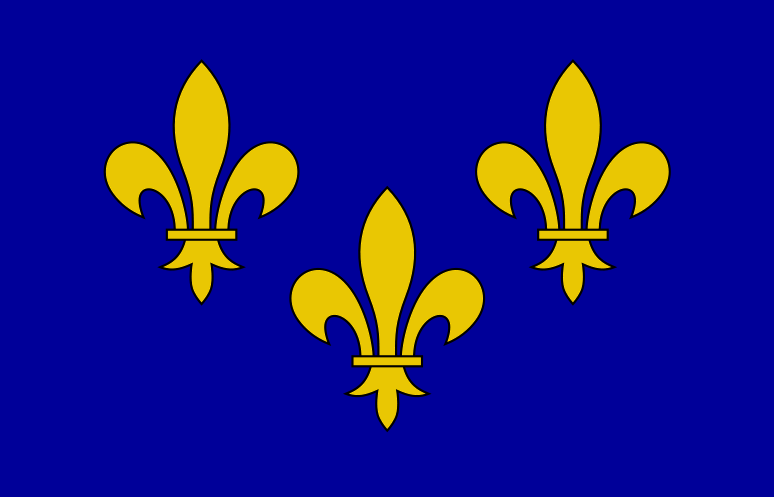|
Sébastien De Luxembourg
Sebastien de Luxembourg, viscomte de Martigues (1530-1569) was a French military officer, peer of France and governor of Brittany. Martigues began his political career serving under his uncle Étampes the governor of Brittany as the lieutenant-general of the province. He gained the office of colonel-general of the French infantry after the prior office holder died at the siege of Rouen during the first war of religion. In this important military role he played a key part in the royal victory at the Battle of Dreux, the main battle of the first of the French Wars of Religion. In 1565 on the death of his uncle, he gained both the governorship of Brittany and the county of Penthièvre which was subsequently elevated to a dukedom. During the second civil war he assisted the royal army in reaching full strength to hunt down the rebel army that was fleeing eastwards, before the abrupt peace restored the status quo in March 1568. Unhappy with the peace Martigues was among those campaign ... [...More Info...] [...Related Items...] OR: [Wikipedia] [Google] [Baidu] |
Brittany
Brittany (; french: link=no, Bretagne ; br, Breizh, or ; Gallo language, Gallo: ''Bertaèyn'' ) is a peninsula, Historical region, historical country and cultural area in the west of modern France, covering the western part of what was known as Armorica during the period of Roman occupation. It became an Kingdom of Brittany, independent kingdom and then a Duchy of Brittany, duchy before being Union of Brittany and France, united with the Kingdom of France in 1532 as a provinces of France, province governed as a separate nation under the crown. Brittany has also been referred to as Little Britain (as opposed to Great Britain, with which it shares an etymology). It is bordered by the English Channel to the north, Normandy to the northeast, eastern Pays de la Loire to the southeast, the Bay of Biscay to the south, and the Celtic Sea and the Atlantic Ocean to the west. Its land area is 34,023 km2 . Brittany is the site of some of the world's oldest standing architecture, ho ... [...More Info...] [...Related Items...] OR: [Wikipedia] [Google] [Baidu] |
Guyonne De Breüil
Guyonne de Breüil was a French lady-in-waiting at the court of Mary, Queen of Scots in France and Scotland. Family background She was a daughter of Henri Lyonnet de Breil, seigneur de Paluau and Anne de Baudreuil. In 1527 she married Jean de Beaucaire, sieur de Puyguillon (1505-1578), in 1527. The Château du Puy-Guillon is at Vernusse in the Auvergne. In June 1552, the Cardinal of Lorraine sent Jean de Beaucaire, Sieur de Puyguillon, usually known as "Peguillon", to Scotland to address the financial affairs of Mary of Guise. He became one of masters of Mary, Queen of Scots' household, retiring in 1574. Scottish court In September 1561 they both came to Scotland with Mary, Queen of Scots. They returned to France for a visit in August 1562 with their son. Her husband, bringing letters from Mary, was a given a passport to come to London and meet Elizabeth I. They were accompanied by Mademoiselle de Fonte-Pertuis and two more of Mary's gentlewomen. The passport issued at Berwick-u ... [...More Info...] [...Related Items...] OR: [Wikipedia] [Google] [Baidu] |
Jean De Ferrières
Jean de Ferrières (1520–1586), Vidame de Chartres, Seigneur de Maligny, was an influential Huguenot in the French Wars of Religion in the 16th century. He died a prisoner in a galley, unable to pay his ransom, and was succeeded by his nephew, Pregent de La Fin. Family Jean de Ferrières, Vidame de Chartres, was the grandson of Jean de Ferrières (died 1497), who had been twice married, firstly to Marguerite de Bourbon (d. before February 1482), illegitimate daughter of John II, Duke of Bourbon (d. April 1488), by whom he had two sons who died without issue, and secondly to Marie de Damas, Dame de Maligny, by whom he had an elder son, Philippe de Ferrières, who inherited the Ferrières lands, and a younger son, François de Ferrières (died 1544), who inherited the Maligny lands, and in 1516 married Louise de Vendôme (d. by 1553), despite the strong opposition of her brother, Louis de Vendôme (d. 22 August 1526). François de Ferrières (died 1544) who was chamberlain to Ch ... [...More Info...] [...Related Items...] OR: [Wikipedia] [Google] [Baidu] |
Gabriel De Lorges, Count Of Montgomery
Gabriel de Lorges, Count of Montgomery, Lord of Lorges and Ducey (5 May 153026 June 1574), was a French nobleman of Scottish extraction and captain of the Scots Guard of King Henry II of France. He is remembered for mortally injuring Henry II in a jousting accident and subsequently converting to Protestantism, the faith that the Scots Guard sought to suppress. He became a leader of the Huguenots. In French-language contexts, his name is spelled Montgommery. Career On 30 June 1559, during a jousting match to celebrate the Peace of Cateau Cambrésis between Henry II and his longtime Habsburg enemies, and two major marriages, namely that of Marguerite, the king's sister, with the Duke of Savoy Emmanuel-Philibert, and that of Elisabeth, the king's eldest daughter, with Philip II, king of Spain, a splinter of wood from Montgomery's shattered lance pierced Henry's eye and entered his brain, fatally injuring him. From his deathbed Henry absolved Montgomery of any blame, before dying on ... [...More Info...] [...Related Items...] OR: [Wikipedia] [Google] [Baidu] |
Peace Of Longjumeau
The Peace of Longjumeau (also known as the Treaty of Longjumeau or the Edict of Longjumeau) was signed on 23 March 1568 by Charles IX of France and Catherine de' Medici. The edict brought to an end the brief second French Wars of Religion with terms that largely confirmed those of the prior edict of Amboise. Unlike the previous edict it would not be sent to the ''Parlements'' to examine prior to its publication, due to what the crown had felt was obstructionism the last time. The edict would not however last, and it would be overturned later in the year, being replaced by the Edict of Saint-Maur which outlawed Protestantism at the beginning of the third war of religion. Towards peace After their loss at the Battle of Saint-Denis the main Huguenot army fled eastwards in disarray, pursued by the royal army. In the wake of the battle, Charles IX sent out a letter to the rebel leadership, entreating the shattered Huguenots to lay down their arms in return for amnesty. Louis, Pri ... [...More Info...] [...Related Items...] OR: [Wikipedia] [Google] [Baidu] |
Charles, Cardinal Of Lorraine
Charles de Lorraine (c. 1525 – 26 December 1574), Duke of Chevreuse, was a French Cardinal, a member of the powerful House of Guise. He was known at first as the Cardinal of Guise, and then as the second Cardinal of Lorraine, after the death of his uncle, Jean, Cardinal of Lorraine (1550). He was the protector of François Rabelais and Pierre de Ronsard and founded Reims University. He is sometimes known as the Cardinal de Lorraine. Biography Born in 1525, Joinville, Haute-Marne, Charles of Guise was the son of Claude, Duke of Guise and his wife Antoinette de Bourbon. His older brother was François, Duke of Guise. His sister Mary of Guise was wife of James V of Scotland and mother of Mary, Queen of Scots. He was made Archbishop of Reims in 1538, (the day after the coronation of king Henry II of France, at which he had officiated). Cardinal In a political move to draw the France closer to the papacy, Pope Paul III consecrated Charles as cardinal in July 1547. He became coadj ... [...More Info...] [...Related Items...] OR: [Wikipedia] [Google] [Baidu] |
Chartres
Chartres () is the prefecture of the Eure-et-Loir department in the Centre-Val de Loire region in France. It is located about southwest of Paris. At the 2019 census, there were 170,763 inhabitants in the metropolitan area of Chartres (as defined by the INSEE), 38,534 of whom lived in the city (commune) of Chartres proper. Chartres is famous worldwide for its cathedral. Mostly constructed between 1193 and 1250, this Gothic cathedral is in an exceptional state of preservation. The majority of the original stained glass windows survive intact, while the architecture has seen only minor changes since the early 13th century. Part of the old town, including most of the library associated with the School of Chartres, was destroyed by Allies of World War II, Allied bombs in 1944. History Chartres was one of the principal towns in Gaul of the Carnutes, a Celts, Celtic tribe. In the Gallo-Roman period, it was called ''Autricum'', name derived from the river ''Autura'' (Eure), and a ... [...More Info...] [...Related Items...] OR: [Wikipedia] [Google] [Baidu] |
Battle Of Saint-Denis (1567)
The Battle of Saint-Denis was fought on 10 November 1567 between a Royalist army and Huguenot rebels during the second of the French Wars of Religion. Although their 74 year old commander, Anne de Montmorency, was killed in the fighting, the Royalists forced the rebels to withdraw, allowing them to claim victory. The only major conflict of the second phase, the battle came about when Montmorency attempted to break Condé's siege of Paris. The Huguenot army retreated towards the border, where they linked up with forces led by their ally John Casimir of the Palatinate-Simmern, before besieging Chartres in February 1568. The war ended shortly thereafter. Prelude to battle Paris invested After the failure of the Protestants to capture the king in the Surprise of Meaux, Charles IX and the queen mother rushed to Paris. Keen not to waste his mobilisation advantage, Conde made camp at Saint-Denis on 2 October, hoping to quickly starve the capital out before the full royal army co ... [...More Info...] [...Related Items...] OR: [Wikipedia] [Google] [Baidu] |
Gaspard II De Coligny
Gaspard de Coligny (16 February 1519 – 24 August 1572), Seigneur de Châtillon, was a French nobleman, Admiral of France, and Huguenot leader during the French Wars of Religion. He served under kings Francis I and Henry II during the Italian Wars, attaining great prominence both due to his military skill and his relationship with his uncle, the king's favourite Anne de Montmorency. During the reign of Francis II he converted to Protestantism, becoming a leading noble advocate for the Reformation during the early reign of Charles IX. With the outbreak of civil war in 1562, Coligny joined the Huguenots in their fight against the Crown. He served as a lieutenant to Louis, Prince of Condé throughout the first two civil wars, before becoming the ''de facto'' leader of their military efforts after Condé's death during the third civil war. Due to accusations levelled at him by the assassin of the Catholic Francis, Duke of Guise, in 1563 the powerful Guise family accused ... [...More Info...] [...Related Items...] OR: [Wikipedia] [Google] [Baidu] |
Restalrig
Restalrig () is a small residential suburb of Edinburgh, Scotland (historically, an estate and independent parish). It is located east of the city centre, west of Craigentinny and to the east of Lochend, both of which it overlaps. Restalrig Road is the main route through the area, running from London Road, at Jock's Lodge, to Leith Links. It is in the ward of Lochend. History and buildings The place name ''Restalrig'' means ''ridge of the miry land'' (from ''lestal'', a northern dialect term meaning ''mire'' and ''rig'', Scots and northern English meaning a linear field or land-holding). It is first mentioned as Lestalric in 1165, when Edward de Lestalric built a church on the site. The church was completed in 1210 by his grandson, Sir Thomas de Lestalric. The area, over the following centuries, is variously named as Lestalryk, Restalric or Rastalrig. The Norman noble family the de Lestalrics were the ancient landowners in the area (including nearby South Leith). Sir John d ... [...More Info...] [...Related Items...] OR: [Wikipedia] [Google] [Baidu] |
Siege Of Leith
The siege of Leith ended a twelve-year encampment of French troops at Leith, the port near Edinburgh, Scotland. The French troops arrived by invitation in 1548 and left in 1560 after an English force arrived to attempt to assist in removing them from Scotland. The town was not taken by force and the French troops finally left peacefully under the terms of a treaty signed by Scotland, England and France.Knight, p. 120 Background The Auld Alliance and Reformation of religion Scotland and France had long been allies under the "Auld Alliance", first established in the 13th century. However, during the 16th century, divisions appeared between a pro-French faction at Court and Protestant reformers. The Protestants saw the French as a Catholic influence and, when conflict broke out between the two factions, called on English Protestants for assistance in expelling the French from Scotland. In 1542, King James V of Scotland died, leaving only a week-old daughter who was proclaimed Ma ... [...More Info...] [...Related Items...] OR: [Wikipedia] [Google] [Baidu] |
Catholic League (France)
The Catholic League of France (french: Ligue catholique), sometimes referred to by contemporary (and modern) Catholics as the Holy League (), was a major participant in the French Wars of Religion. The League, founded and led by Henry I, Duke of Guise, intended the eradication of Protestantism from Catholic France, as well as the replacement of King Henry III. Pope Sixtus V, Philip II of Spain, and the Jesuits were all supporters of this Catholic party. Origins Local confraternities were initially established by French Catholics to counter the Edict of Beaulieu in 1576. King Henry III placed himself at the head of these associations as a political counter to the ultra-Catholic League of Peronne. Following the repudiation of that edict by the Estates General, most of the local leagues were disbanded. Following the illness and death of Francis, duke of Anjou, heir to the French throne, on 10 June 1584, Catholic nobles gathered at Nancy. In December 1584, the League drew up ... [...More Info...] [...Related Items...] OR: [Wikipedia] [Google] [Baidu] |
